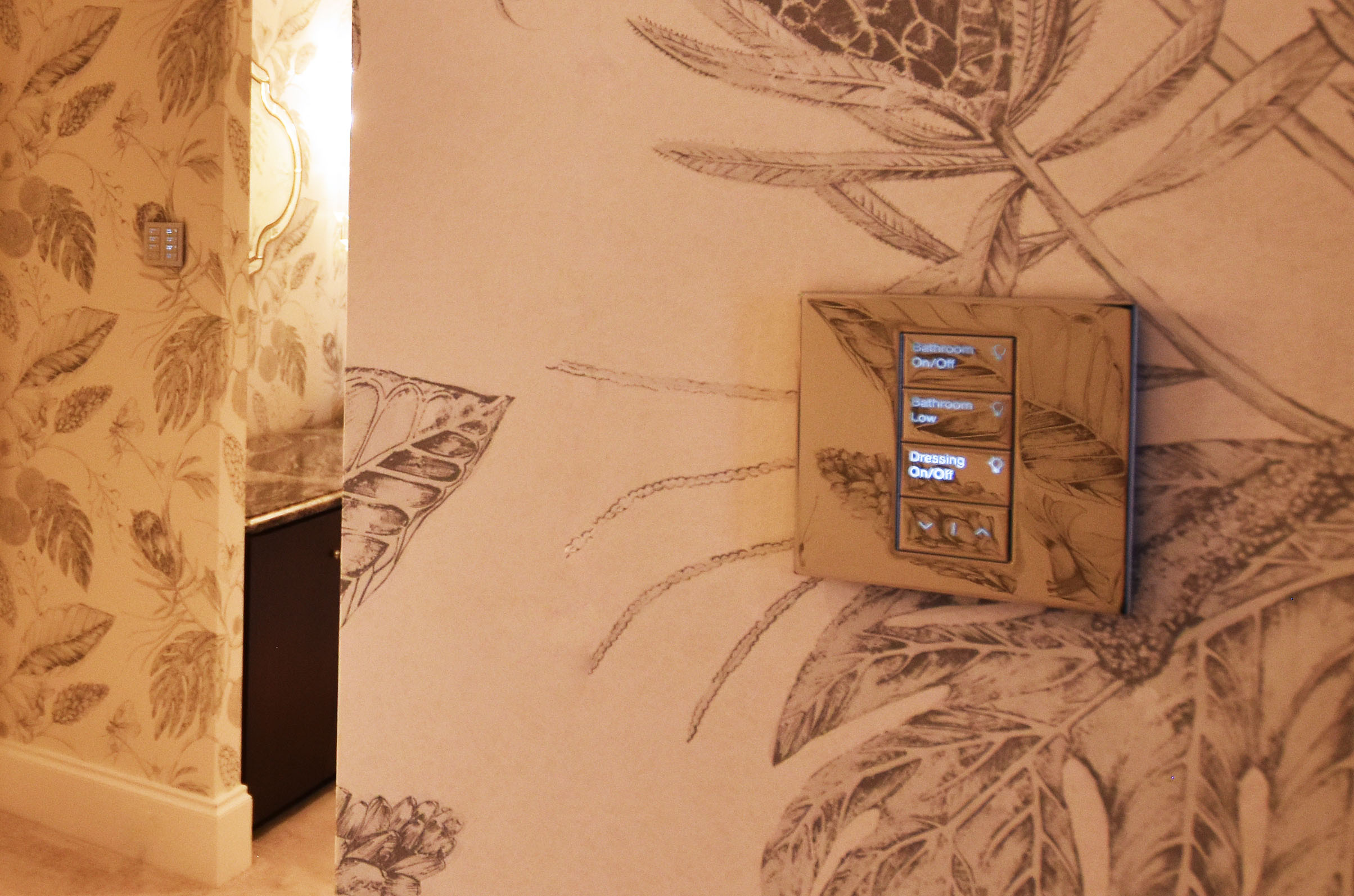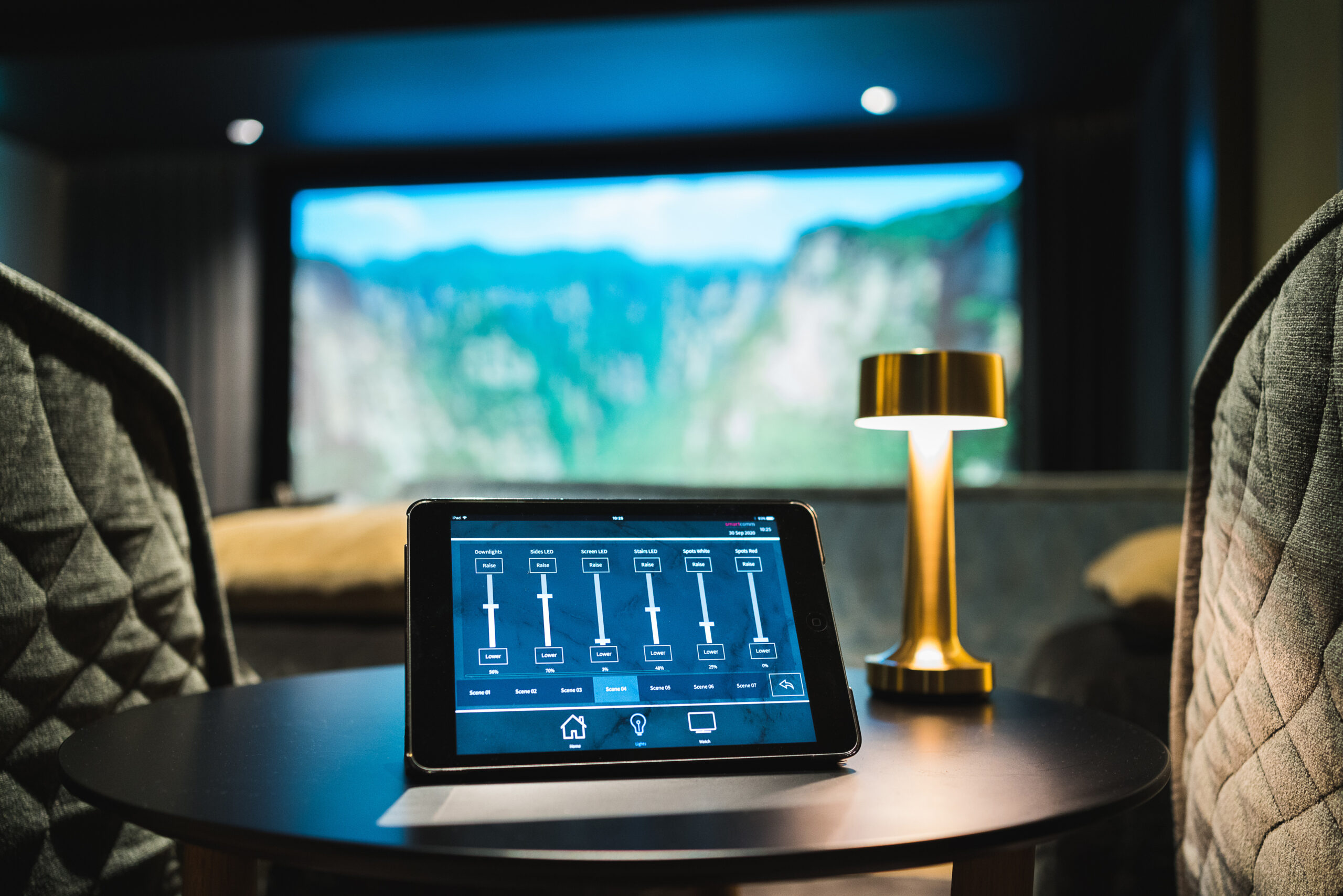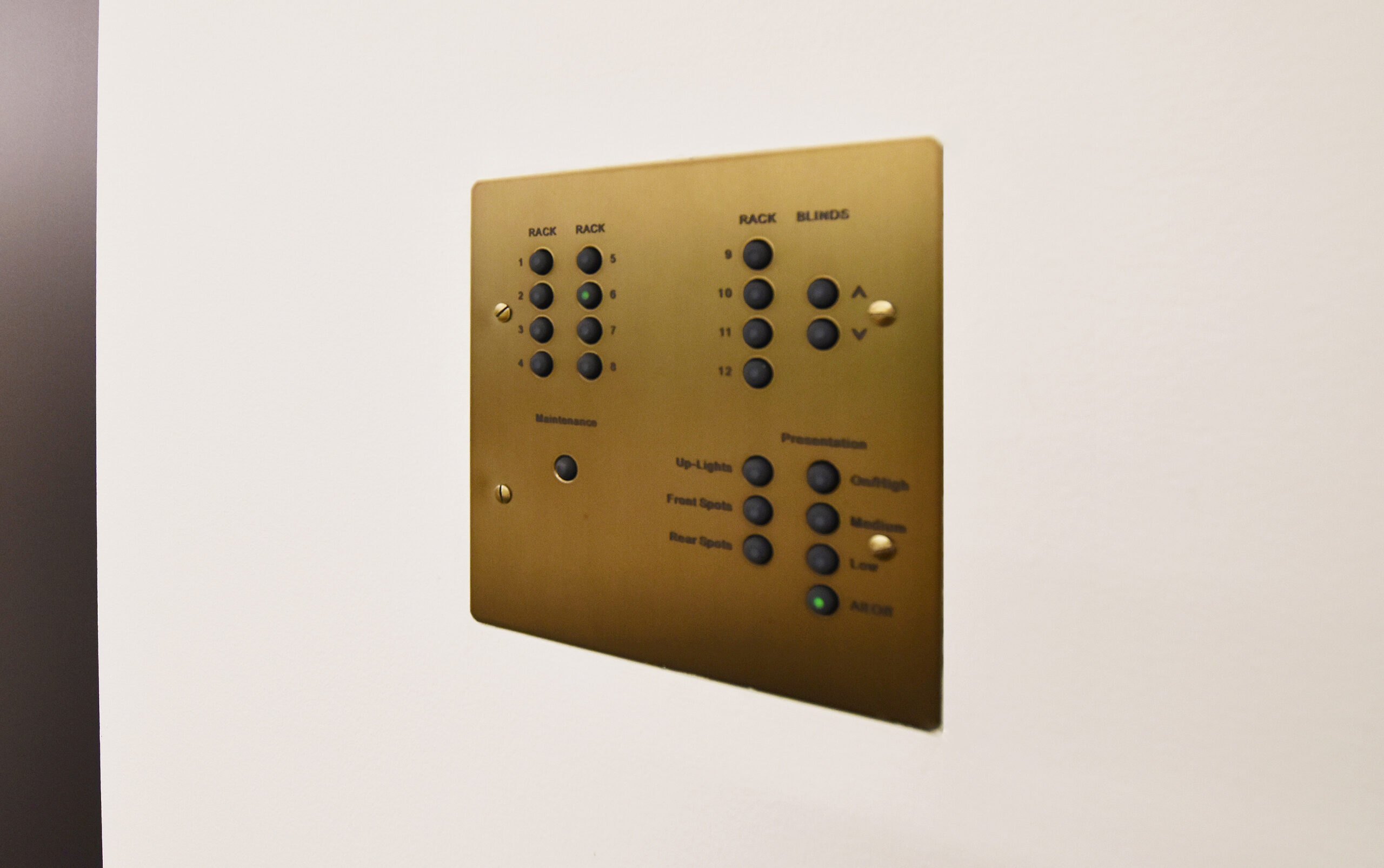
What is Smart Lighting?
Smart lighting offers advanced lighting control and automation, from meeting rooms to lounges and from lecture theatres to restaurants. Smart lighting solutions are characterised by easy to use control options which include tablets, phone apps, touch panels, remote controllers and keypads.
Benefits
The popularity of smart lighting is due to the numerous benefits for owners, staff and visitors.
- Ease of Use. The solutions are powerful but made easy to use with intuitive user interfaces. They can be customised to blend perfectly with the interior decor.
- Optimised scene setting. Smart lighting control ensures the environment has perfect lighting, whatever the use such as conferences, meetings, social events or receptions. This includes both internal and external lighting.
- Energy saving and convenience are also important factors. For example being able to shut everything off or turn it on with one single button is not only convenient but helps reduce wasted resource usage and removes the time needed for staff (or residents) to go round individual light switches.
- Motion sensors mean lights are only used when the space is occupied and automatically turn off, which makes them an efficient and sustainable option.
- Smart lighting encapsulates lighting of the full environment, and includes automation of lights and window treatments such as curtains and blinds. Light sensors can help achieve the correct lighting levels according to taste and where appropriate, according to legislation (you can read more about lighting legislation in our article here: Lighting Regulations (smartcomm.co.uk))
- Security. Having the ability to programme lighting to come on at pre-set times, or control it remotely, means a property can appear lived in which is a deterrent for criminals.
- Productivity. Smart lighting control allows the lighting to be programmed, with each different potential area use captured as lighting scenes. These lighting scenes help productivity by adjusting all the lighting quickly and efficiently e.g. switching from speaker to presentation mode during a conference or changing the ambience from morning to evening in a lounge.
There are more specific smart lighting systems such as HCL and BL.
Human Centric Lighting (HCL)
Human Centric Lighting (sometimes referred to as Biocentric Lighting), is a form of automated smart lighting control. HCL seeks to stimulate the natural circadian rhythm, helping to enhance cognitive skills and wellbeing. In office environments this promotes productivity but is also found to be beneficial in education and care facilities. HCL focuses on people’s need for natural light to promote creative thinking and high levels of concentration. It is used to provide the ideal visual conditions which allow people to feel better and perform better, by enhancing their ability to concentrate, increasing alertness and reducing fatigue. Through colour temperatures, HCL can stimulate the course of natural daylight to support the human circadian rhythm. The different colour temperatures can affect the mood, productivity and ambience, just as bright white light is great for a morning strategy meeting, a softer, warmer light will be better for an afternoon meeting or a sensitive personnel meeting.
Biophilic Lighting (BL)
Biophilic lighting is another form of Smart lighting which seeks to mimic the natural light patterns and cycles experienced in nature in an indoor setting. Its goal is to connect people with nature and promote wellbeing. It also allows the adjustment of the intensity, colour temperature and distribution of light to align with the circadian rhythm. In addition, the lighting solutions replicate natural light patterns and integrate organic elements. This can have significant impacts on the wellbeing, productivity of meetings and overall mood. Some examples of biophilic lighting include:
- layered lighting to mimic nature, with a mix of light and shade
- lighting filtered through water or algae to mimic the natural dispersion of light, and
- the use of natural lighting in central spaces using light tunnels.
If you would like to talk with one of our experts, we offer free no-obligation consultations. You can contact us here.




